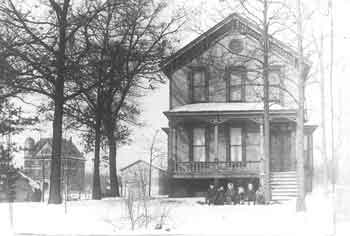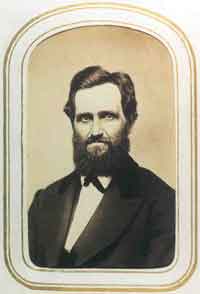|
In order to discover who lived in your house before you, you must have the legal description of your property. This should be on the permit. If it is not, go to the city's Department of Transportation, Bureau of Inspection, Division of Maps and Plats. At the end of the room is an annex with waist high cabinets holding oversized books. You can look it up yourself or ask staff for assistance. To look it up yourself, follow the directions below.
Most taxation or building departments maintain what is called a locator map, usually on open display or available as a pamphlet. Identify the area your home is in, note the color indicator and number, and find the appropriate book. Each book contains detailed maps. In the front is an index. On the page where your property is shown, copy the numbers and letters at the top; find your lot, copy down the number closest to it, and the letter closest to that. Write down the lot and block numbers; the subdivision name; and the section, township and range (look for these at the top of the map, e.g. "NW 1/4 sec. 15-38-14). Take good notes so you don't have to return. It's a good idea to ask someone for help as sometimes the subdivisions of property can be misleading.
Your next step is to go to the County Office of the Recorder of Deeds (May be another specific office title in your local area). You'll often find a a large room is a series of low cabinets filled with identically bound books. Records are usually indexed, and if your lucky indexed on computer. This is similar to the process performed during a title search, so don't forget to check with your or previous title search companies for the results of their efforts.
Check with the clerk for the exact details in your records office, usually there is an index page in the front of each tract book that will direct you to the correct subdivision. Then look for the appropriate block and lot you're interested in. In a variety of handwriting from recorders of deeds through the decades, you'll find the names of sellers and buyers, types of transactions, and other miscellaneous information. Some of the transaction abbreviations used are not self-explanatory. Ask at the front desk if you need help deciphering them.
Be aware that the information found on these pages make up the clues that you need to track down the stories of the people who lived in your house, so don't overlook anything that you may want to follow up on later.
If there is some transaction on your tract's page that piques your interest, and you want to look at the complete transaction document, ask a clerk to help you look up the book and page for the document number. Take the document number and book and page to the microfilm library next door where you fill out a form to receive the appropriate microfilm. On the microfilm you will find more details of the legal transaction which may give you clues for further follow up.
Learning More About The Owners of Your House Once again, your local Historical Society is the best place for you to start this research once you know who the previous owners were.
If you are following in the footsteps of a prominent town citizen, try looking up his/her name in any available form of media.
Examples:
Directories
Old phone or business directories. resources such as church or club records, etc. Various types of directories are useful in providing information about houses and their occupants. They were published by various companies, but there are two basic types: alphabetical (by name) and reverse (by address).
Census Records
Census Records are a fascinating way to learn more about the people who lived in your house. For instance you can discover the names of everyone in the house and their relationships to each other. Census reports came out every 10 years beginning in 1840. Due to privacy concerns, the Census Bureau delays issuing complete records for 72 years. Consequently, the 1930 census is the last one to have been issued. Also, 99% of the 1890 census was destroyed in a fire.
|





